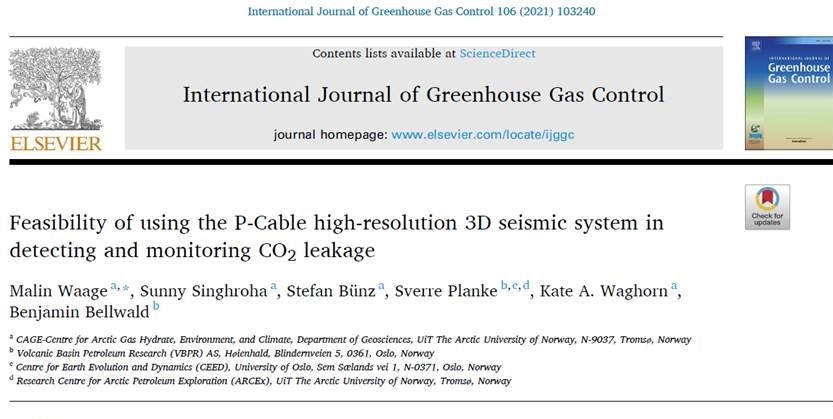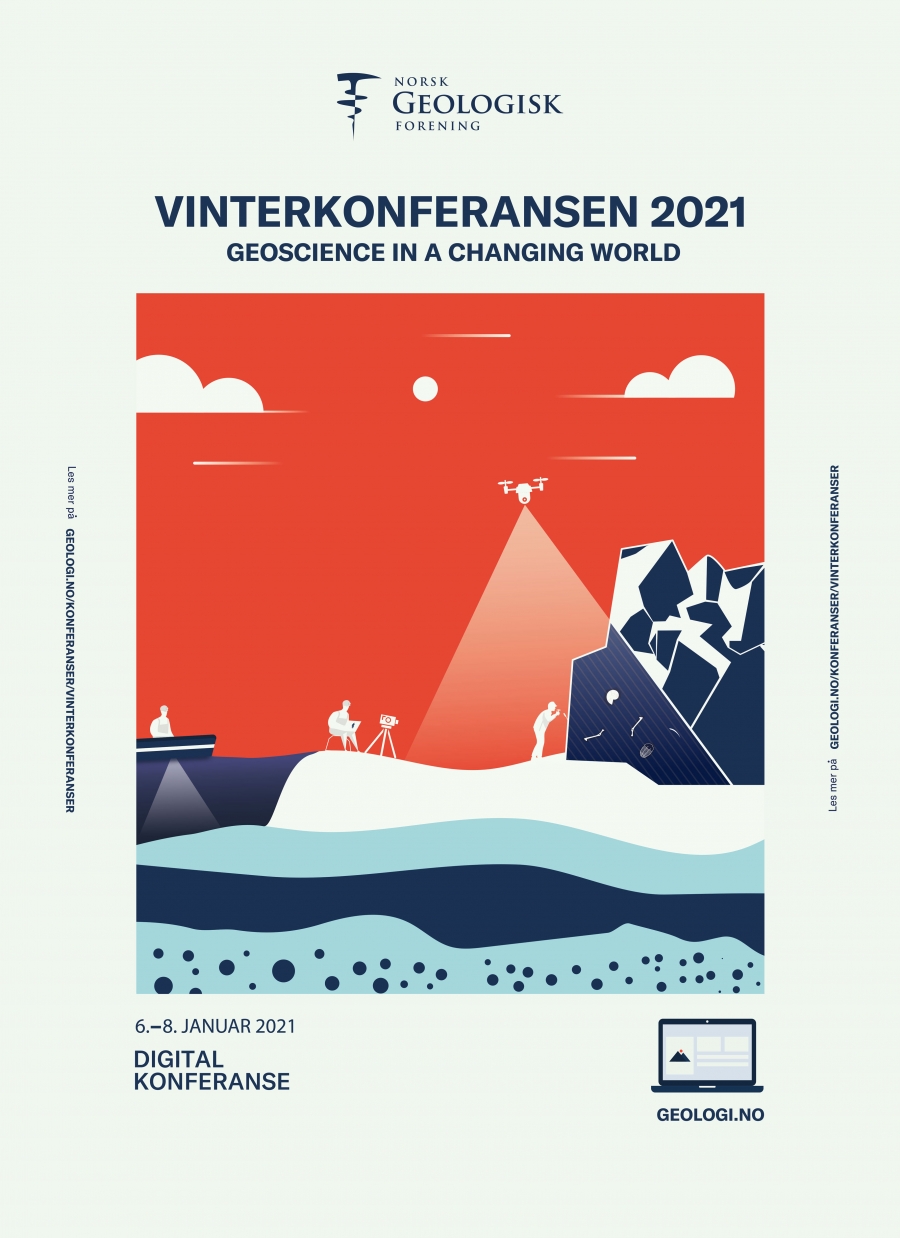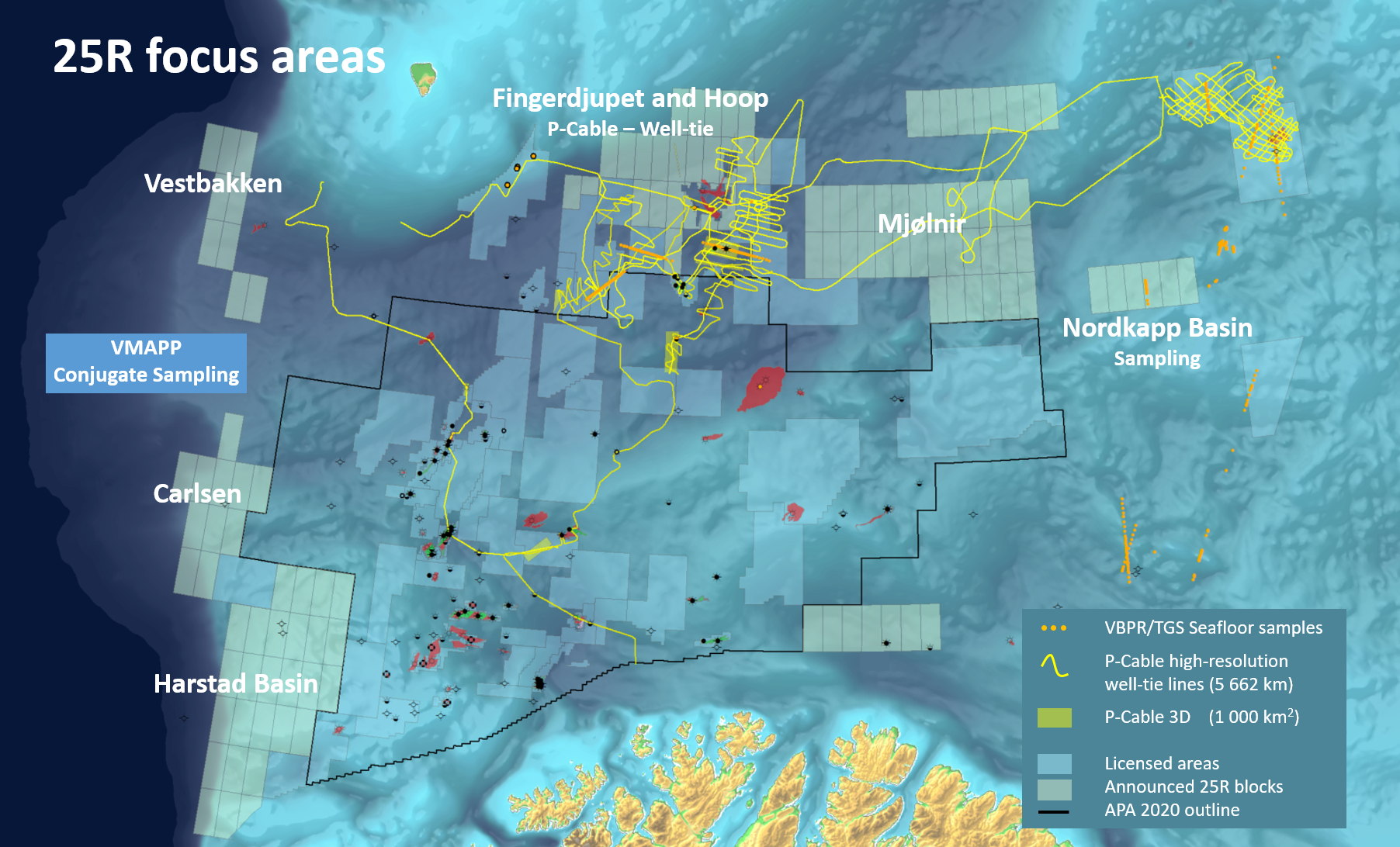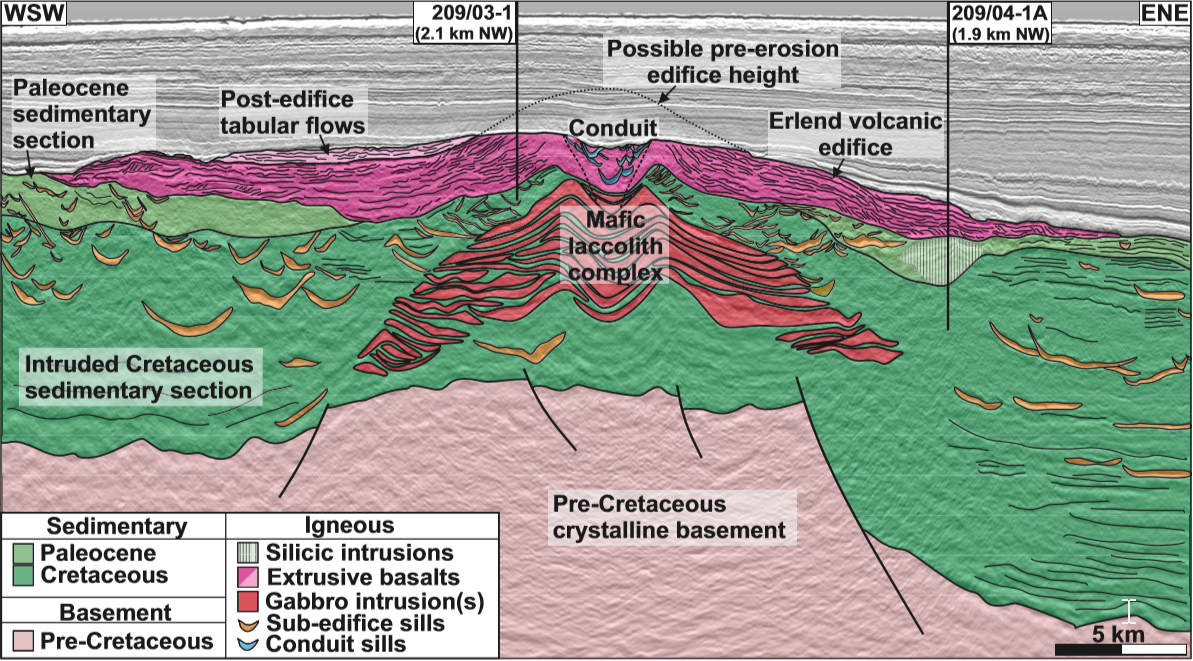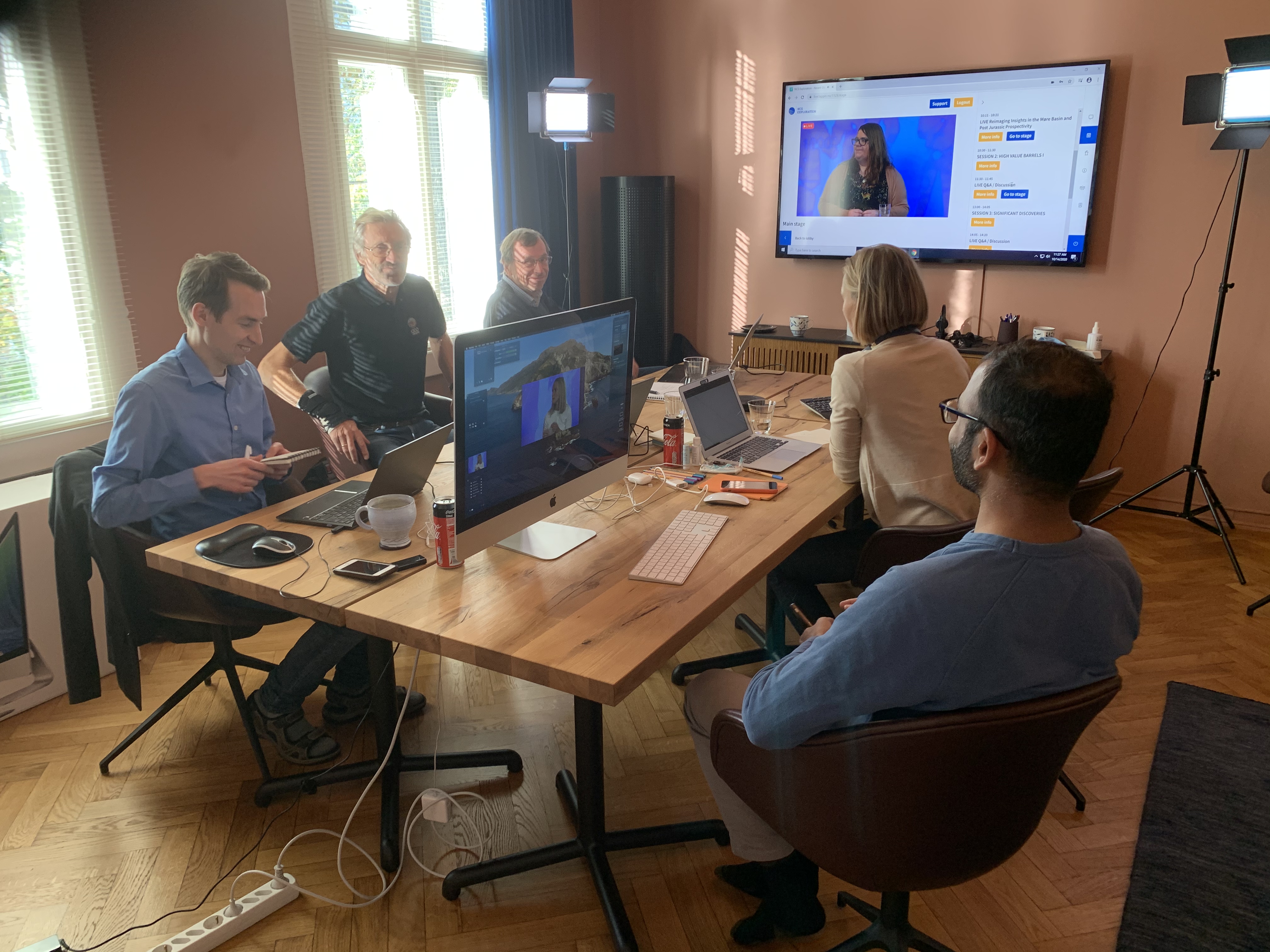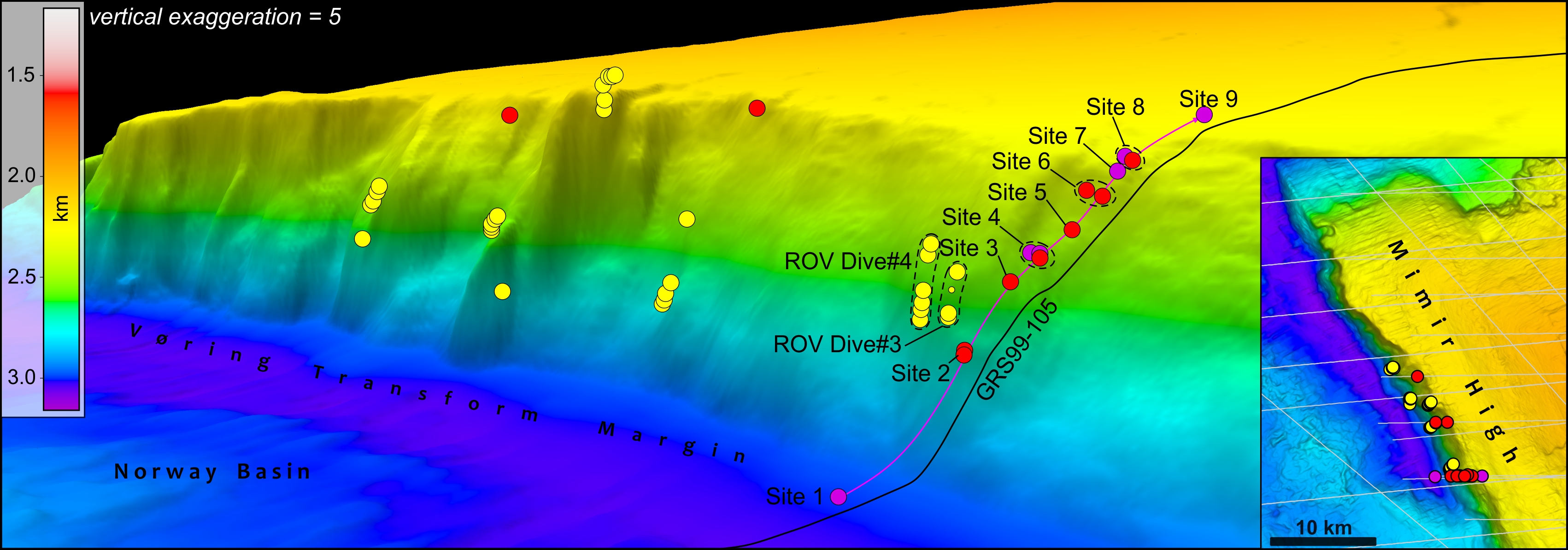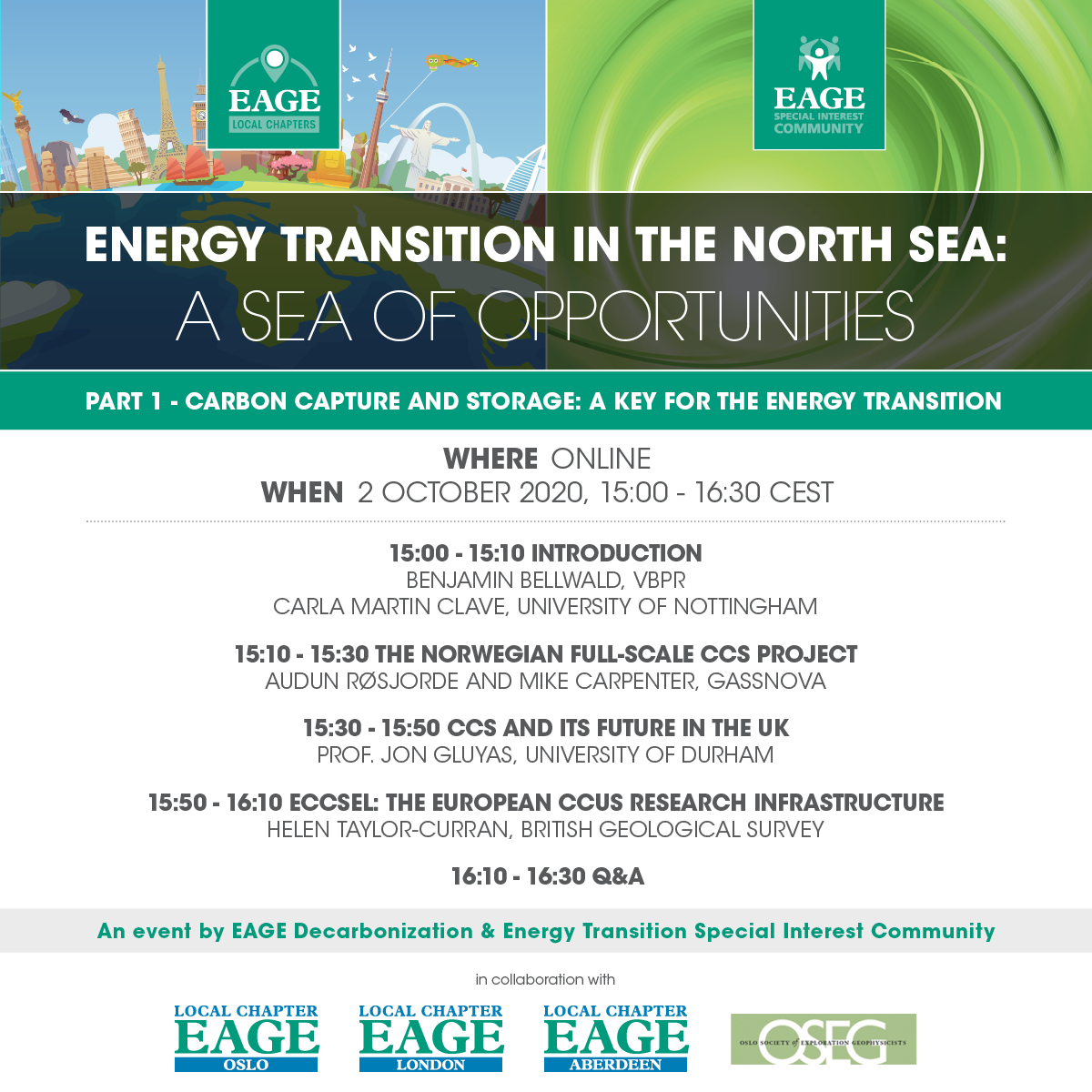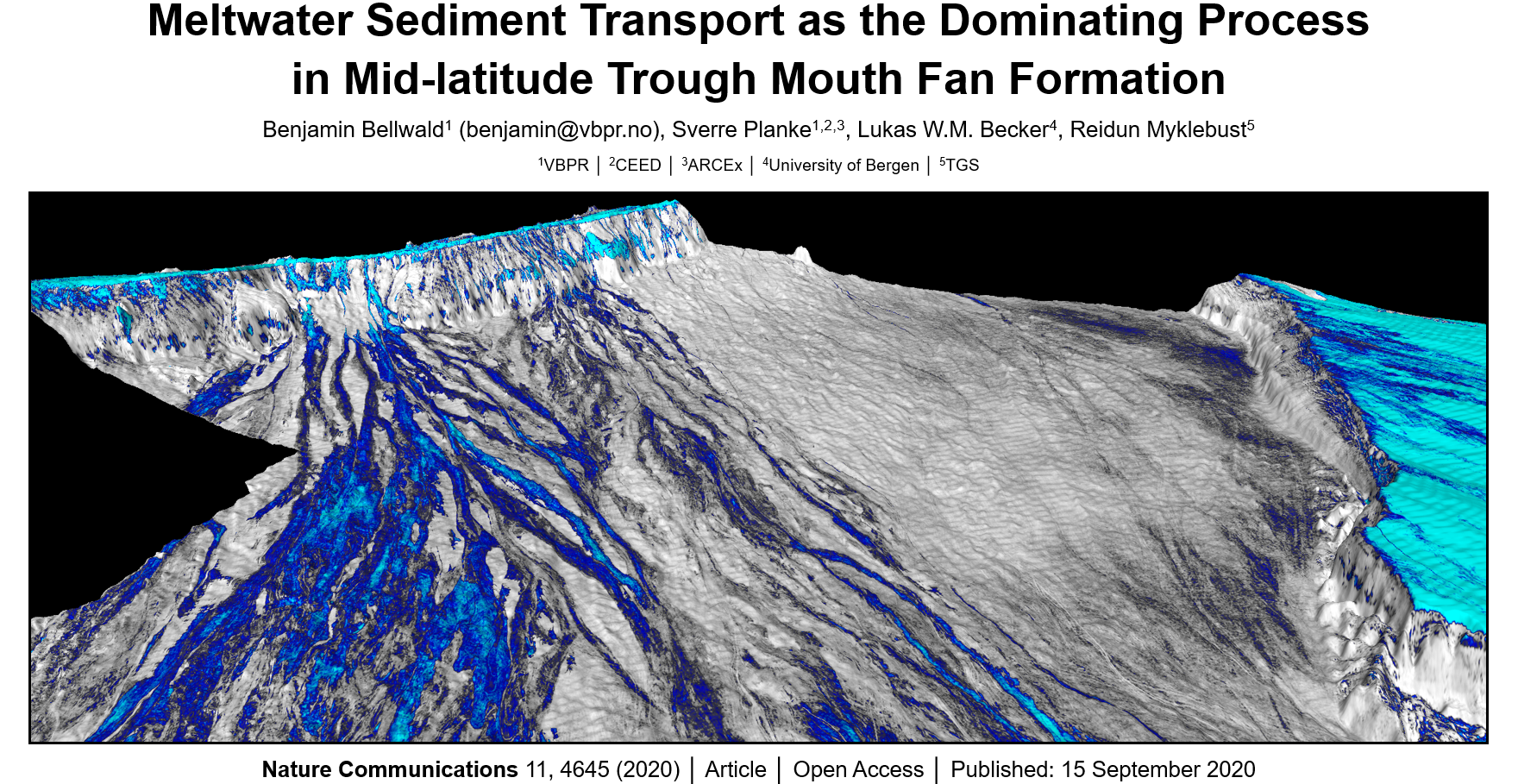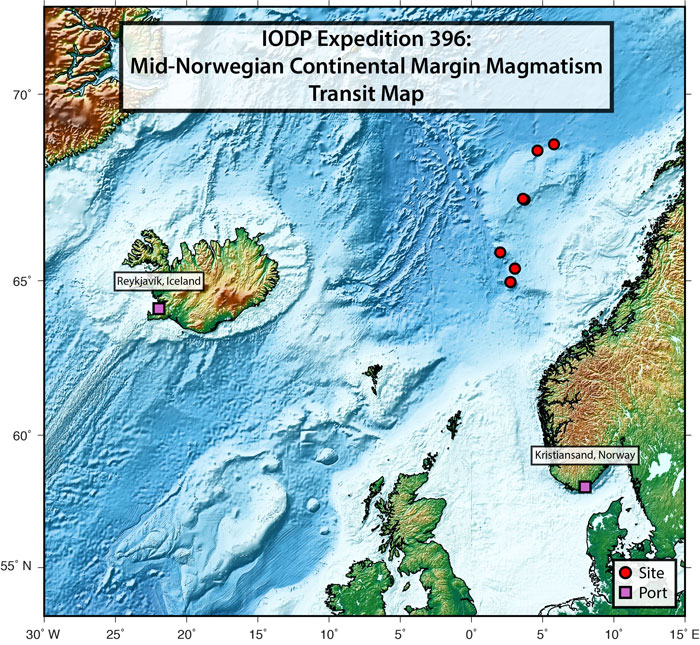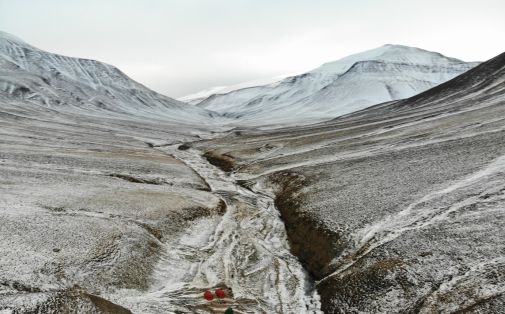Malin Waage (CAGE) with new paper on new accomplishments with P-Cable 3D data
High-resolution 3D (HR3D) seismic has the potential to detect and monitor CO2 leakage at carbon capture and storage sites with higher accuracy at depths ∼0−2 km below the seafloor compared to more traditional conventional seismic time-lapse data. Studies on P-Cable 4D seismic data show good repeatability (NRMS, 10–40 %), indicating a future monitoring potential. Analysis of detection limits of CO2 data from a CO2 storage site show the ability to detect very small amounts of CO2 (1.3–10.6 t; 3.3–27.4 % gas saturation) in the shallow subsurface. These detection limits are ∼30−300 times smaller than the detection limits of conventional seismic data at similar depths.
We conclude that the P-Cable acquisition system can be a valuable monitoring tool in detecting small leakages and can complement conventional seismic data monitoring of the deeper interval.
